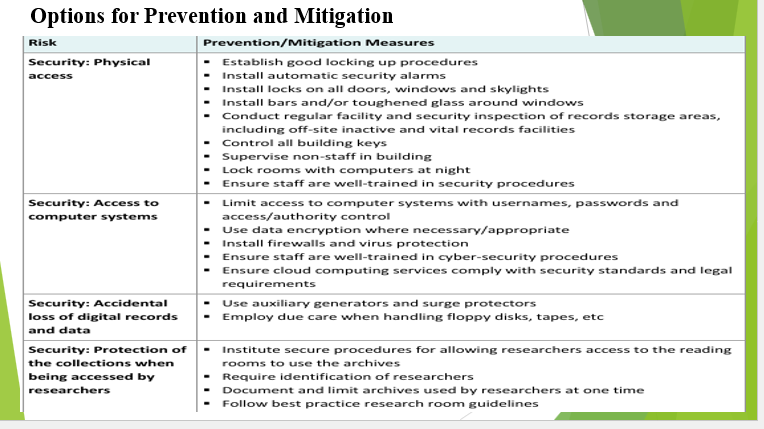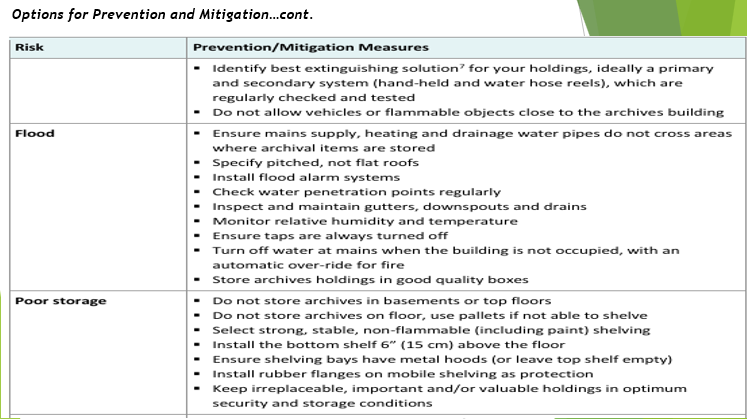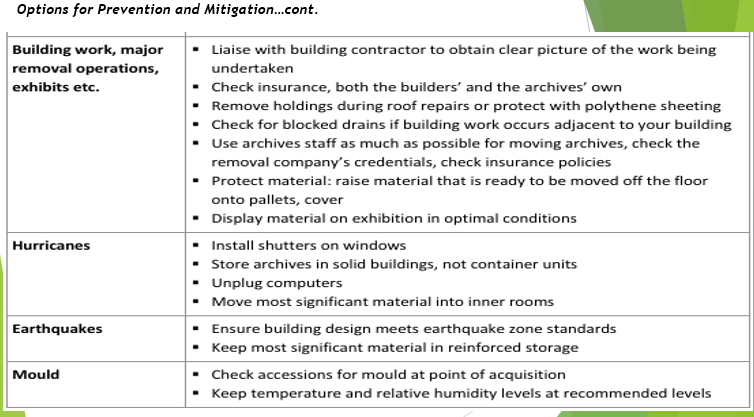UNIT 9 ENUMERATION
1/29
There's no tags or description
Looks like no tags are added yet.
Name | Mastery | Learn | Test | Matching | Spaced |
|---|
No study sessions yet.
30 Terms
6 natural disasters
flood
earthquake
volcanic eruption
forest fire
hurricane
tornado
5 disaster management cycle
prevention
mitigation
preparedness
response
recovery
6 characteristics of disaster
ØPredictability
ØControllability
ØSpeed of onset
ØLength of forewarning
ØDuration of impact
ØScope and intensity of impact
principles of disaster
uMinimize the casualties.
uPrevent further casualties.
uRescue the victims.
uFirst Aid.
uMedical Care.
uReconstruction.
uDisaster management is the responsibility of all spheres of
government.
uDisaster management should use resources that exist for
a day-to-day purpose.
uIndividuals are responsible for their own safety.
uDisaster management planning should focus on a large-
scale events.
uDisaster management should recognize the difference
between incidents and disaster.
effects of earthquake
oShaking of earth.
o Surface falling.
o After shocks.
o Tremors and vibrations.
o Landslides.
o Probability of occurrence can be determined but not the exact time.
draught causes
qRainfall deficit.
qHuman induced changes in ground surface & soil, sea-surface temperatures, increase of an atmospheric carbon dioxide and green house gases .
deforestation occurs due to
qFirewood collection
qTimber harvesting
deforestation adverse effect
qFlood
qDraught
qFamine (decrease in agricultural production due to erosion of top-soil and collapse of hillside may lead to food shortage).
chemical and industrial pollution causes
ØDisasters in plants/factory handlings.
ØExplosion of toxic substances.
ØImproper waste management of toxic chemicals.
ØTechnological system failure.
ØNatural hazards in industries like fire.
Disasters such as floods and fires, theft, vandalism, insect and pest infestation and mold outbreaks threaten the survival of documentary heritage. They result in the material suffering:
§destruction through burning;
§fire and smoke damage;
§destruction through water damage;
§loss of both artefact and the information it contains through theft;
§loss of both artefact and the information it contains through vandalism;
§damage through consumption, use as nesting materials or defecation by insects or pests;
§loss due to extreme mold outbreaks that cannot be treated and/or are too dangerous to health for humans to handle;
§damage, including partial loss of information due to mold staining;
§ loss or destruction due to collapse of building;
§corruption and/or deletion or partial deletion of digital documentary heritage through cyber-security breaches, theft, vandalism or human carelessness;
§ inaccessibility of digital documentary heritage through obsolescence of hardware and software and lack of digital preservation management.
options for prevention and mitigation
physical access, computer access, accidental loss, collection protection

options for prevention and mitigation
accidental disclosure, fire

options for prevention and mitigation
flood, poor storage

options for prevention and mitigation
building work, hurricanes, earthquakes, mould

options for prevention and mitigation
insects, rodents

options for prevention and mitigation
hurricanes

When evacuation alarm sounds or you are directed to evacuate the facility:
1. Remain calm.
2. Shut down all hazardous operations.
3. Follow instructions.
4. Assist disabled persons.
5. Leave the area in an orderly fashion. Close doors, but do not lock.
6. Follow established evacuation routes.
7. Move away from the structure. Go directly to the assembly area (map
provided with plan). Report to the Evacuation Coordinator for a
“head count”
8. Do not block the street or driveway.
9. Stay at the assembly area until instructed otherwise
in case of a fire
1. Remain calm.
2. Contact the Fire Department.
3. If the fire is small, try to extinguish it with the proper type of extinguisher or other method.
Do not jeopardize personal safety.
4. Do not allow the fire to come between you and the exit.
5. Disconnect electrical equipment if it is on fire and it is safe to do so.
6. Notify the supervisor and evacuation coordinator, if possible.
7. Evacuate if you can not extinguish the fire. Assist disabled persons.
8. Do not break windows.
9. Do not open a hot door. (Before opening a door, touch it near the top. If it is hot or if
smoke is visible, do not open.)
10. Do not use elevators.
11. Do not attempt to save possessions.
12. Go directly to the assembly area.
13. Do not return to the affected area until told to by appropriate authorities.
In the event of a severe storm watch within the surrounding area:
1. Listen to the local radio/TV or Weather Radio for
instructions.
2. Plan ahead before the storm arrives.
3. Tie down loose items located outside or move
them indoors.
4. Open windows slightly, time permitting, on the
side away from the direction of the storm’s
approach.
5. Check battery-powered equipment and back-up
power sources.
6. Fill vehicles with gas.
Hurricane Warning
1. Board up windows or protect them with storm shutters or tape. Some should be left slightly open to equalize the pressure.
2. Leave low-lying areas that may be swept by high tides or storm waves.
3. Stay in the building if it is sturdy and on high ground. If not - and especially if local authorities order an evacuation - move to a designated shelter.
4. Remain indoors. Don't be fooled by the calmness of the "eye." Remember, the winds on the other side of the "eye" will come from the opposite direction.
Tornado Warning
1. Go to the basement, if available, or an interior hallway.
2. Upper floors are unsafe. If there is no time to descend, go to a closet, a small room with strong walls, or an inside hallway.
3. Do not remain inside a vehicle. As a last resort, and if no ditch or ravine is nearby, crawl under the vehicle.
4. If in open space and time permits, locate suitable shelter. If not, lie in the nearest ditch or ravine. Be alert for flash floods.
Flood - watch and warning
In case of a flood watch in the area:
1. Listen to local radio/TV.
2. Prepare to take immediate precautionary actions.
3. If driving, watch for flooding at highway dips, bridges, and low areas due to rain not seen by you, but which may be indicated by thunder and lightning.
In case of a flood warning in the area:
1. Listen to local radio/TV.
2. Prepare to evacuate upon direction. (Note: If a flash flood warning is issued, get out of the area immediately.)
3. Assist disabled persons and follow instructions of emergency preparedness personnel.
4. Check any battery-powered equipment & back-up power sources.
5. Store drinking water in clean receptacles (e.g., sinks, jugs).
1. earthquake If indoors
- Stay there.
- Take cover under sturdy furniture (desks, work tables, etc.)
or in a supported doorway.
- Stay near the center of the building.
- Do not run for the exit as the stairs may be broken or jammed
with people.
- Do not use elevators.
- Stay away from glass windows, doors, display cabinets,
bookcases, etc.
- Do not use candles, matches, or other open flame as there
may be gas leaks.
- Extinguish all fires with the proper type of extinguisher or
other method.
eq If outdoors
- Move to an open area away from buildings, utility wires, trees, etc.
- If forced to stand near a building, watch for falling objects.
wq If driving a vehicle
.
- Stop as quickly as safety permits, avoiding overpasses and power lines.
- Remain in the car until the shaking stops.
- If able to drive on after the shaking stops, watch for hazards which may
have been created by the earthquake (e.g., fallen/falling objects, downed
utility wires, undermined roadways, damaged bridges/overpasses).
Five (5) ways to Dry Wet Books and Records
1. Air Drying
2. Dehumidification
3. Freeze Drying
4. Vacuum Thermal Drying
5. Vacuum Freeze Drying
air drying books
qFan books open and stand on top or bottom edge; never stand them on the front edge.
qStand the book upright, on its head, on absorbent paper.
qSupport the book by opening the covers somewhat, but not the pages. When the pages begin to dry and separate on their own, interleave them.
Prepare interleaves. Suitable materials are thin
blotters, unprinted newsprint, and paper towels.
qInterleave absorbent paper every 25-50 pages.
qCut interleaves that are bigger than the pages.
qInsert the interleaves into the gutter margin of the book.
tools to use hair dryer
hair dryer and piece of absorbant cloth
Using Blow Dryer to Dry Books
To use a hair dryer to dry wet books, follow these steps:
§Place the wet book on a flat surface.
§Use an absorbent cloth to wipe off water residues from the pages.
§Press the hair dryer 5 to 8 inches away from the wet pages and move it frequently until the dampness is gone.
§Avoid touching the spine with the hair dryer to prevent damage.
§Allow the book to air dry in a dry area away from direct sunlight to prevent yellowing.